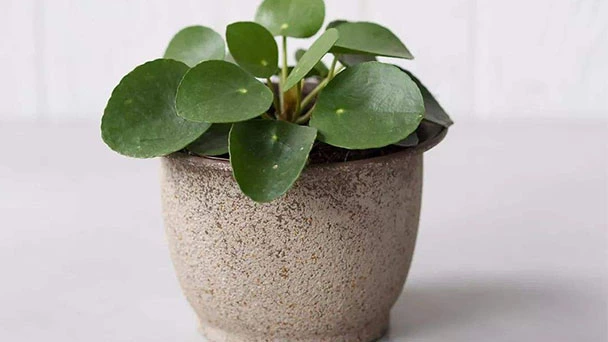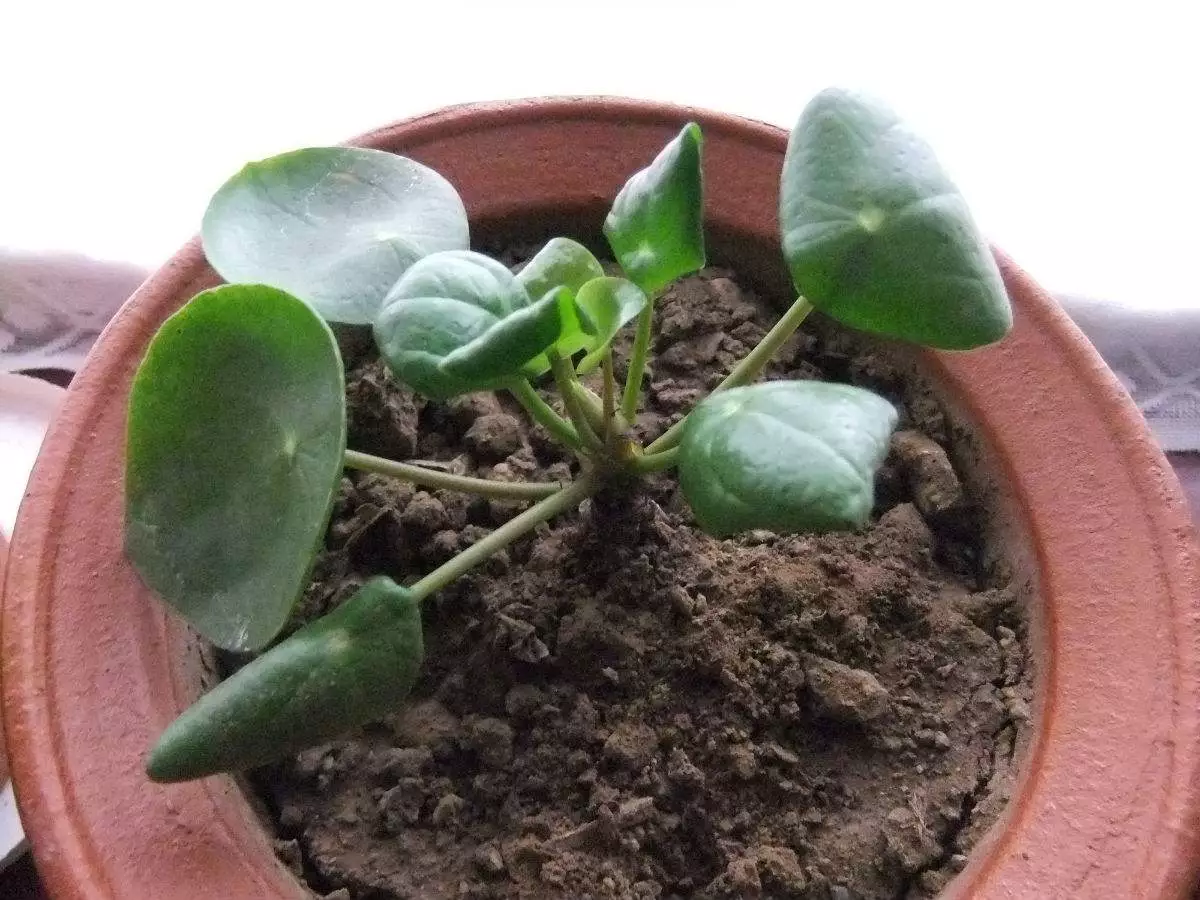What Is The Best Soil For Pilea Peperomioides?
Written by Ivy
Dec 29 2021

Pilea peperomioides does not have strict requirements for flower soil, but it is best to use weak acid flower soil with fertility, air permeability and good water retention. Pilea Peperomioides like a moderately rich, well-draining potting mix. Specifically, we can mainly use garden soil, mix a small amount of river sand and base fertilizer to make its flower soil, or mix five parts of rotten leaf soil, two parts of river mud, two parts of garden soil and one part of river sand evenly to make its flower soil.
 Pilea peperomioides can be cultivated in fertile and loose soil with large water absorption and good water retention, as well as in wet river banks, swamps and grasslands. Generally, the cultivation soil with soft and good drainage is preferred.
Pilea peperomioides can be cultivated in fertile and loose soil with large water absorption and good water retention, as well as in wet river banks, swamps and grasslands. Generally, the cultivation soil with soft and good drainage is preferred.
How To Water My Pilea Peperomioides?
The second is the basin removal operation. When we change the basin, we should pour out the Pilea peonomioides together with the basin soil inside. Clean up the original basin soil, focusing on the treatment of roots. Cut all the thick roots, and select several roots with bud holes about 5cm long for replanting.
The third is to carry out the basin operation. Before going to the basin, put a layer of coarse sand or ceramsite on the bottom of the basin to facilitate drainage. Then lay a layer of nutrient soil, and then evenly lay the trimmed root segment of Pilea peperomioides on it, pay attention to the bud eyes and leaves facing upward, sprinkle nutrient soil, gently compact the basin soil by hand, and do a good job of maintenance after watering.
During the service period of Pilea peperomioides, we should water as appropriate. If it is a basin on dry soil, we should pour water through the basin for the first time. It is best to replenish water by soaking the basin method, which will make the water penetrate into the basin soil more thoroughly and replenish water more evenly and fully. Within two weeks after changing the pot, it is appropriate to place the seedlings in a cool and ventilated place, then gradually increase the light, and restore the normal water and fertilizer management at the same time.
Soil Composition
Pilea peperomioides does not have very strict requirements for flower soil. Generally, flower soil can meet its growth needs. However, for family planting, it is best to use weak acid flower soil with good fertility, air permeability and water retention. Fertile flower soil has high nutrient content, which can ensure the nutrient demand of plants; Breathable flower soil has good air fluidity, which can ensure smooth breathing of plant roots; The flower soil with good water retention can maintain a slightly wet state, which is more suitable for the growth of Pilea peperomioides.How To Make Your Own Potting Mix?

- We can mainly use garden soil, mixed with a small amount of river sand and base fertilizer to make the flower soil of Pilea peonomioides. This kind of soil is a general soil. Because river sand is added, it has a certain air permeability and water retention capacity, which is more suitable for it.
- We can mix five parts of rotten leaf soil, two parts of river mud, two parts of garden soil and one part of river sand to make its flower soil. This kind of flower soil can be said to be very suitable for the growth of Pilea peonomioides. It has good nutrient content, air permeability and water holding capacity.
How To Water My Pilea Peperomioides?
Repot Your Pilea About Once a Year
First of all, we should prepare the basin and soil. It is best to use a flowerpot with a water outlet at the bottom of the basin to plant Pilea peonomioides. If you use a basin with no water outlet at the bottom, it is not conducive to the circulation of water in the basin. The accumulated water in the basin will deteriorate over a long time, which will affect the healthy growth of Pilea peonomioides. The new nutrient soil should be mixed with garden soil, humus soil or mountain mud, and a small amount of rotten fertilizer can be added as base fertilizer.The second is the basin removal operation. When we change the basin, we should pour out the Pilea peonomioides together with the basin soil inside. Clean up the original basin soil, focusing on the treatment of roots. Cut all the thick roots, and select several roots with bud holes about 5cm long for replanting.
The third is to carry out the basin operation. Before going to the basin, put a layer of coarse sand or ceramsite on the bottom of the basin to facilitate drainage. Then lay a layer of nutrient soil, and then evenly lay the trimmed root segment of Pilea peperomioides on it, pay attention to the bud eyes and leaves facing upward, sprinkle nutrient soil, gently compact the basin soil by hand, and do a good job of maintenance after watering.
During the service period of Pilea peperomioides, we should water as appropriate. If it is a basin on dry soil, we should pour water through the basin for the first time. It is best to replenish water by soaking the basin method, which will make the water penetrate into the basin soil more thoroughly and replenish water more evenly and fully. Within two weeks after changing the pot, it is appropriate to place the seedlings in a cool and ventilated place, then gradually increase the light, and restore the normal water and fertilizer management at the same time.
Latest Updated
- Benefits of Bugleweed - 7 Science-backed Health Benefits
- Bugleweed Dangers & Side Effects - Is It Poisonous?
- How to Plant Evergreen Trees - What You Should Know
- When to Plant Evergreens - Grow Guide for Evergreen Trees
- 12 Wonderful Evergreen Shrubs for Your Garden
- 12 Popular Evergreen Plants with Pictures for Beginners
- When And How To Prune A Lilac Bush Like a Pro
- How to Grow & Care for Lilac Vine (Hardenbergia Violacea)
- Japanese Lilac Tree (Syringa Reticulata) Care & Propagation Guide
- Shumard Oak Pros and Cons - What to Know
Popular Articles
- Winter maintenance of Antirrhinum Majus
- How to Grow Terminalia Mantaly Tree
- How to Grow and Care for Crossostephium Chinense
- How to grow Antirrhinum Majus in spring
- Peristeria Elata (Dove Orchid) Profile: Info & Care Guide
- Underwatered Snake Plant (Sansevieria Trifasciata) - Signs And How To Fix
- How to Care for Brazilian Jasmine Plant (Mandevilla Sanderi)
- How to Grow & Care for Graptopetalum Purple Delight in Summer
- Rosa Chinensis (China Rose): Plant Growing & Care Tips
- How to Care for Baby Sun Rose (Aptenia Cordifolia)